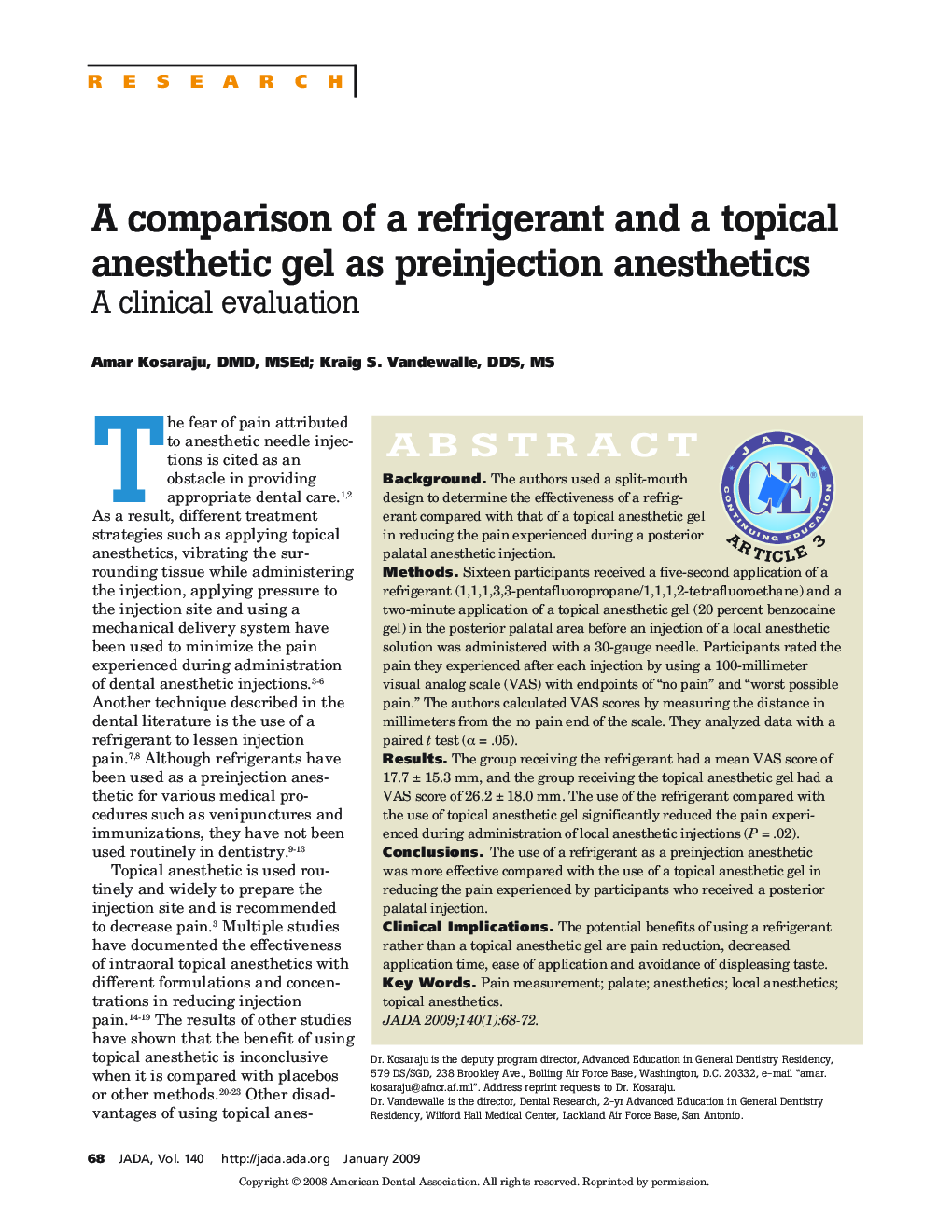| Article ID | Journal | Published Year | Pages | File Type |
|---|---|---|---|---|
| 3139017 | The Journal of the American Dental Association | 2009 | 5 Pages |
ABSTRACT BackgroundThe authors used a split-mouth design to determine the effectiveness of a refrigerant compared with that of a topical anesthetic gel in reducing the pain experienced during a posterior palatal anesthetic injection.MethodsSixteen participants received a five-second application of a refrigerant (1,1,1,3,3-pentafluoropropane/1,1,1,2-tetrafluoroethane) and a two-minute application of a topical anesthetic gel (20 percent benzocaine gel) in the posterior palatal area before an injection of a local anesthetic solution was administered with a 30-gauge needle. Participants rated the pain they experienced after each injection by using a 100-millimeter visual analog scale (VAS) with endpoints of “no pain” and “worst possible pain.” The authors calculated VAS scores by measuring the distance in millimeters from the no pain end of the scale. They analyzed data with a paired t test (α = .05).ResultsThe group receiving the refrigerant had a mean VAS score of 17.7 ± 15.3 mm, and the group receiving the topical anesthetic gel had a VAS score of 26.2 ± 18.0 mm. The use of the refrigerant compared with the use of topical anesthetic gel significantly reduced the pain experienced during administration of local anesthetic injections (P = .02).ConclusionsThe use of a refrigerant as a preinjection anesthetic was more effective compared with the use of a topical anesthetic gel in reducing the pain experienced by participants who received a posterior palatal injection.Clinical ImplicationsThe potential benefits of using a refrigerant rather than a topical anesthetic gel are pain reduction, decreased application time, ease of application and avoidance of displeasing taste.
